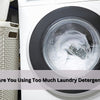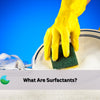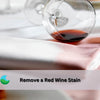The 10 Do's and Don'ts of Cleaning your Floor
- by Brodie Cook

Mopping seems simple, but many households unknowingly make mistakes that damage their floors over time. Using too much water, the wrong cleaning products or improper techniques can leave behind streaks, residue, or even long-term harm. Whether you have timber, vinyl, or tile floors, a few common cleaning habits could be doing more harm than good.
Floors are a major part of any home, and keeping them clean without causing damage requires the right approach. Without proper care, wooden floors may warp, vinyl may peel, and tiles may lose their shine. Avoiding these common mistakes will help maintain your floors' durability and appearance while making cleaning easier and more effective.
Not beating around it: the 10 Do's and 10 Don'ts of cleaning a floor
10 Don’ts: Common Mopping Mistakes to Avoid
-
Using Too Much Water
Oversaturating floors can cause wood to warp, vinyl to lift, and grout to weaken. Always use a damp mop rather than a soaking wet one. -
Skipping Sweeping or Vacuuming First
Mopping over dirt and debris spreads grime around instead of cleaning it. Always sweep or vacuum before mopping to avoid streaks and residue. -
Using the Wrong Cleaner
Harsh chemicals like bleach, ammonia, or acidic cleaners can strip the finish, discolour surfaces, or weaken adhesives. Use a pH-neutral cleaner suited for your flooring type. -
Using a Dirty Mop
Reusing an unwashed mop spreads bacteria and dirt instead of removing it. Rinse and clean mop heads after every use to avoid spreading grime. -
Not Changing Mop Water Frequently
Using dirty water just moves grime around. Always refresh your mop water when it starts looking cloudy to ensure a thorough clean. -
Using Steam Mops on Unsuitable Floors
Timber and laminate floors can swell or warp from excessive heat and moisture. Stick to microfiber mops for these surfaces. -
Scrubbing Floors with Abrasive Tools
Hard-bristled brushes or steel wool can scratch wood, vinyl, and laminate floors, damaging their finish. Use a soft mop or microfiber cloth instead. -
Ignoring the Drying Process
Leaving floors wet can lead to streaks, water stains, or even mould growth. Speed up drying with good airflow, a dry mop, or a microfiber towel. -
Using the Wrong Mopping Technique
Mopping in random motions can push dirt back onto clean areas. Use an ‘S’ or ‘W’ pattern to effectively cover the floor without recontaminating it. -
Walking on Wet Floors Too Soon
Walking on freshly mopped floors can leave footprints and spread dirt. Allow enough time for the floors to dry completely before stepping on them.

 Dishwashing
Dishwashing Laundry
Laundry Bundles
Bundles Toilet
Toilet



